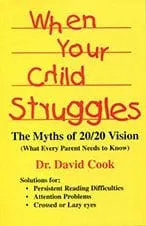Eyesight, Infinity, and the Human Heart
Shakespeare’s words are timely. We practice in an eye-care community that largely believes we “see” with our eyes and “think” with our brains. This heady constriction of perception, dreams, and emotion somehow stifles what we sense to be true. A mother looking into the smiling face of her son, a young man gazing into the eyes of his beloved—each knows. When life rises above the confines of the ordinary, we “see” and “think” with our hearts.
But what of those who have no hearts? What of those who argue that “love is blind” and therefore not worthy of consideration? After all, in our age of skillfully wrought statistical studies, blind is not good enough. To have the slightest merit as a fashionable scientific endeavor, life must be “double-blind.”
It is small wonder that when the forty thousand eye-care practitioners, carefully raised and nurtured on a diet of double-blind speculation, gather to beat their breasts and argue the merits of the latest throw-away-your-glasses surgeries, they seldom discuss the human heart. They are far more comfortable discussing anatomy or, perhaps, money. They prefer the solid things which can be cut with a knife, burnt with a laser, or folded in a wallet. Patients who fail to live up to the expectations of anatomy and complain of symptoms despite 20/20 eyesight are routinely banished from the eye-care kingdom and branded as “malingerers” or “hysterics.”
It does not surprise us that eye-care practitioners would be more at ease with what they can examine with a microscope or slice with a blade: what more could you expect from a group of men and women whose myopic catechism teaches that infinity is twenty feet? But can the phrase “behold the infinite” really be reduced to the command “call out the smallest letters you can read at the end of the room”? Certainly, there is more to vision than anatomy. Consider, for example, one of the most famous books of the twentieth century.
Published in 1929, F. Scott Fitzgerald’s jazz-age classic *The Great Gatsby* has captivated millions; undoubtedly a better sales performance than Wolff’s *Anatomy of the Eye and Orbit*. And yet, when describing the nearly universal impact of an ophthalmologist’s billboard advertisement, Fitzgerald abandoned the dictates of science to write, “The eyes of Doctor T.J. Eckleburg are blue and gigantic—their retinas are one yard high.” That Fitzgerald confused the retina…
—
To explore these intriguing insights and uncover the deeper connections between our hearts and vision, download the full article now. Discover how our perception transcends the limits of anatomy and delve into the poetic intersection of sight, emotion, and the human experience.
Check Out Our Resources
Dr. Cook’s Publications:
- Authored books VISUAL FITNESS and WHEN YOUR CHILD STRUGGLES.
- Published articles in top optometric journals.
- His article “Eyesight, infinity and the human heart” was voted “Best Non-Technical Article” by the Association of Optometric Editors.



